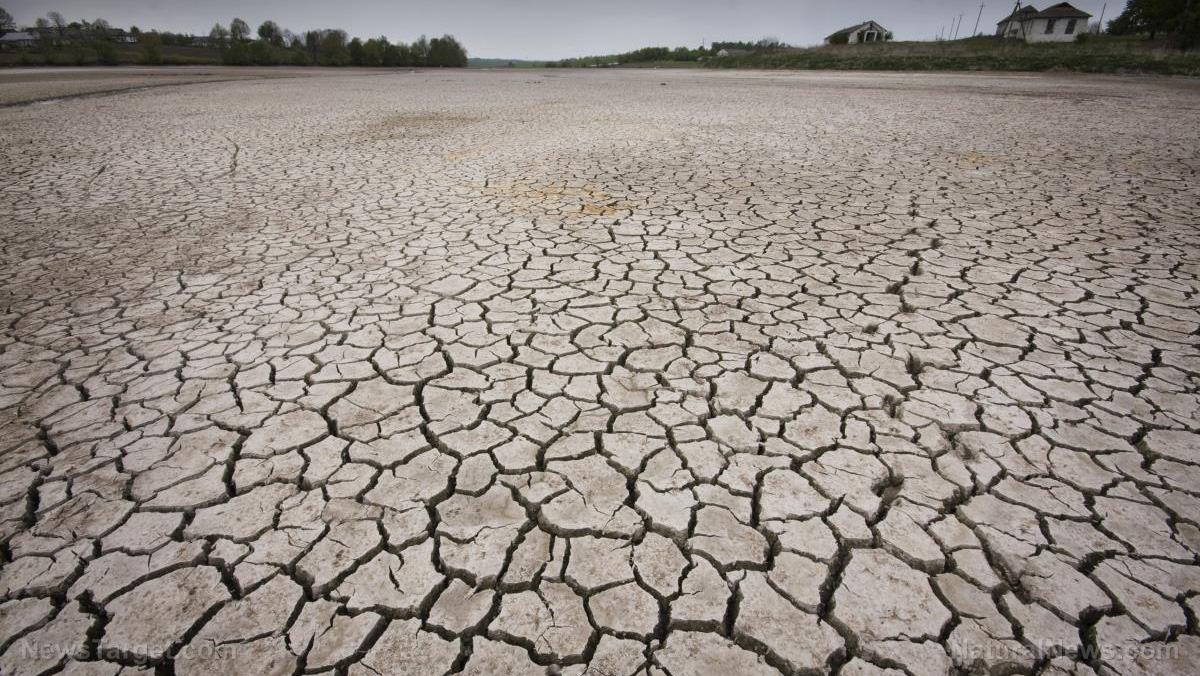Biden administration to spend BILLIONS for Ukraine, but only MILLIONS to boost food production in America
05/04/2022 / By Mary Villareal

The Biden administration wants people to plant more soybeans and wheat in 2023. The government proposal includes paying $10 per acre crop insurance subsidy for farmers who double-crop wheat and soybeans.
But it is merely a part of a larger plan as Biden seeks an additional $33 billion in emergency spending, the bulk of which will be used as military aid for Ukraine to fund weapons and to provide longer-term economic and humanitarian aid for the war-torn country. The other $3 billion will be used for humanitarian assistance that would help address food security needs worldwide.
According to the White House, $500 million will be set aside for domestic food production assistance. It will support the production of U.S. food crops that are experiencing a global shortage due to the war, such as soybeans.
Some $400 million will also be spent on higher loan rates for food crops, including wheat, rice, pulses and oil crops.
The United State Department of Agriculture (USDA) is expecting farmers to be able to increase their production during the 2023 crop year and account for almost 50 percent of the level of wheat typically exported by Ukrainian farmers.
If the administration wants to increase production by 50 percent of the exports, this would mean an increase in production of around 10 million tons or 800 million bushels based on a 2021-22 export forecast.
Ukraine exported an average of 19 million tons of wheat annually in the past two years. Half of that volume would be equal to about 18 percent of the USDA’s projected 1.94 billion-bushel crop for 2022.

“[Russian President, Vladimir] Putin’s war, not sanctions, [is] impacting the harvest of food and disrupting the movement of that food by land and sea to nations around the globe that need it,” Biden said. (Related: Russia-Ukraine war will further worsen global food shortage as poor nations face starvation, unrest.)
“This funding is going to help ease rising food prices at home as well as abroad, caused by Russia’s war in Ukraine. It’s going to help support American farmers to produce more crops like wheat and oilseeds, which is good for rural America, good for the American consumer, and good for the world.”
Industry experts: Government incentive baffling and convoluted
Joe Glauber, a senior research fellow at the IFPRI think tank, said the high commodity prices have already given farmers the incentives to plant more crops. However, he remains skeptical of the near-term impact of the proposal, especially considering that the wheat incentive was aimed at the 2023 crop, not this year.
He also said the wheat incentive was convoluted because it is tied to crop insurance coverage of the soybean crop that would be planted after winter wheat is harvested by late spring.
The National Association of Wheat Growers said it is willing to work with Congress to redefine the proposal for more double-cropped wheat. Chandler Goul, the association’s chief executive, said they would like to see wheat production encouraged throughout the nation to incentivize both spring and winter wheat growers. (Related: Price of wheat soars to record high as war between Russia and Ukraine continues.)
The White House proposal will increase the loan rates for food crops for two years. The wheat loan rate would rise by 63 percent, oilseeds by 40 percent and rice and pulses by 21 percent. The loans would run for 12 months instead of the usual nine months.
Other items in the proposal include a request for $1.6 billion for USAID for hunger relief, $100 million for the Food for Progress program, which donates commodities to recipient countries to promote free markets and $20 million to replenish the Bill Emerson Humanitarian Trust, which is an emergency trust fund that responds to food crises.
However, many believe that these plans will not have much impact, questioning the potential outlay of the loan rates and consistency in program participation. Others also called the proposal “baffling” and “convoluted.”
Watch the video below to know more about the wheat and grain shortages in the United States.
This video is from the Hal Graves channel on Brighteon.com.
More related stories:
Floods delay plantings in Northern Plains, could trigger food shortage.
Wheat prices hit a 14-year high as fears of food shortages grow.
Europe faces sunflower oil shortage as Russian attacks on Ukraine continue to disrupt food supply.
Drought threatens US wheat harvest, deepening global supply challenges.
Sources include:
Submit a correction >>
Tagged Under:
agriculture, agriculture loans, big government, chaos, Collapse, crop insurance, food collapse, food production, food security, food supply, harvest, Joe Biden, money supply, skeptics, Soybeans, stupid, traitors, wheat
This article may contain statements that reflect the opinion of the author
RECENT NEWS & ARTICLES
COPYRIGHT © 2017 COLLAPSE.NEWS
All content posted on this site is protected under Free Speech. Collapse.news is not responsible for content written by contributing authors. The information on this site is provided for educational and entertainment purposes only. It is not intended as a substitute for professional advice of any kind. Collapse.news assumes no responsibility for the use or misuse of this material. All trademarks, registered trademarks and service marks mentioned on this site are the property of their respective owners.





















